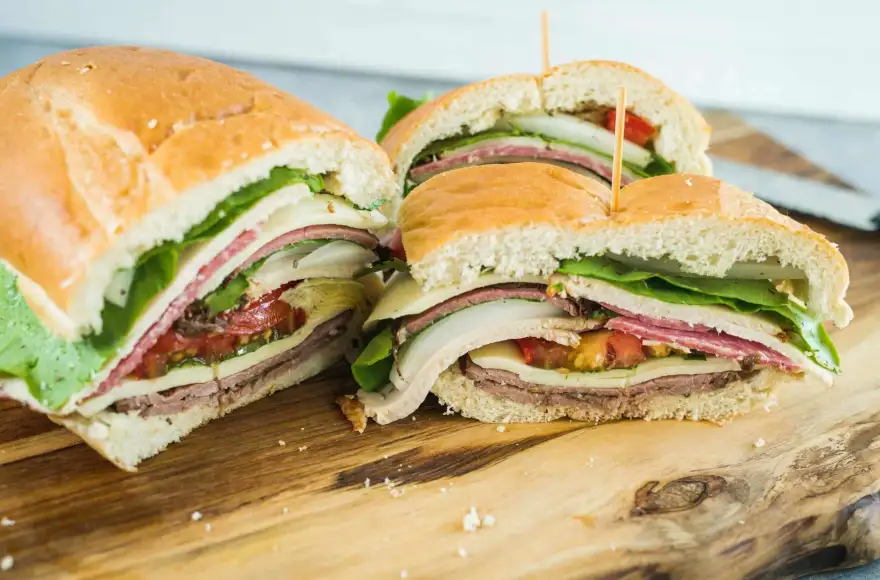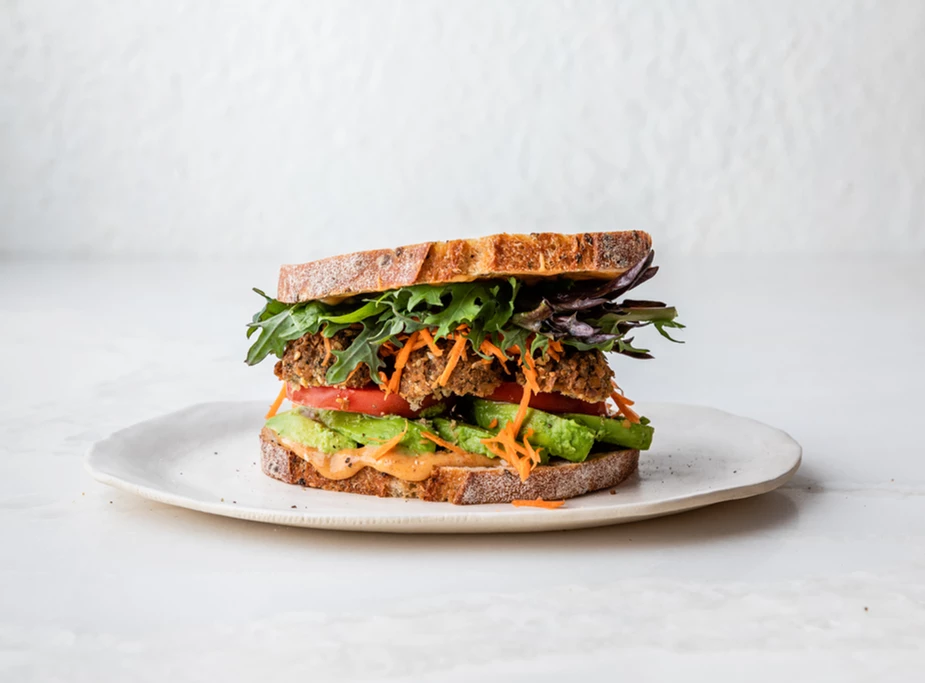Summertime is the perfect time for picnics.
There’s nothing quite like enjoying a delicious meal outdoors, surrounded by friends and family.
However, if you’re not careful, your picnic sandwiches can turn into a soggy mess.
In this blog, we’ll share tips for avoiding soggy sandwiches while picnicking.
How To Avoid Soggy Sandwiches For Picnics?
The perfect picnic sandwich should be fresh and flavorful. Unfortunately, they too often end up bland and soggy.
Avoid this fate by understanding the culprits behind the dreaded soggy sandwich phenomenon.

Start by packing your sandwiches in an airtight container or bag so that moisture doesn’t seep in from outside.
Next, select ingredients that won’t add to the problem; use dry fillings and sauces that are not water-based to prevent them from soaking into your bread.
Avoid warm ingredients.
Finally, if needed, line the bottom of your sandwich with a few slices of lettuce or spinach to keep damp ingredients from saturating the bread below it.
Does Sandwich Bread Get Soggy?
It’s a common dilemma: the fresh, warm sandwich bread that you just bought begins to get soggy.
But why does it happen in the first place?
The answer lies in the ingredients of many commercially-baked sandwich bread.
They usually contain large amounts of added sugar and fat, both of which can draw liquid and easily result in fogginess.
Fortunately, there are ways to prevent this unwelcome outcome like placing wax paper between slices or coating them with mayonnaise before toasting.
Does Toasted Bread Get Soggy?
Toasted bread is a classic staple for breakfast, lunch, and snacks.
But how long does it stay crunchy?
While some people worry that the toasted bread will get soggy, the answer is that it usually depends on what type of bread it is and how much time passes before eating it.
Whole grain bread tends to stay crispy longer than white, regular sliced bread since whole grain contains all three original parts of the grain kernel: the nutrient-rich germ, endosperm, and bran layer.

However, as soon as one applies any liquid – such as melted and cooled butter or a condiment – to the crisp toast, you can expect it to start losing its crunch within minutes.
Avoiding Bread Soggy
One of the most annoying things about eating bread is when it gets soggy from its original crunchy texture.
It’s even worse when you add ingredients to it, such as sandwiches and burgers.
Fortunately, there are ways to prevent the bread from becoming soggy.
To keep bread fresh, store it in a cool, dry place.
Moisture destroys crispiness in bread so ensure that any storage environment for your bread is protected from damp air or moisture.
Another way to avoid sogginess is to toast your sandwich or burger before assembling the ingredients inside.
This’ll help lock the fillings’ moisture away and gives an added layer of crunchy protection on top of the vegetables and protein filling.
Last but not least, never over-stuff your sandwiches or burgers; use only just enough ingredients to fill the sandwich without making it too bulky and unwieldy.
Avoiding A Soggy Sandwich
Toast The Bread
To make the perfect sandwich, it’s important to ensure your bread slices are toasted to perfection.
Negative experiences with soggy sandwiches can easily be avoided by following some simple steps.
Firstly, when selecting bread, choose one that is firm and fits the desired topping; dense bread will provide a firm base for the other ingredients, so they stay where they belong.
Secondly, heat your oven or stovetop griller – it should be at least 350F or higher, depending on preference – and lightly oil both sides of the slice.
Place them in the tray or grill face down and wait until both sides get evenly golden brown.
Olive Oil, Butter, And Condiments
When making your ideal sandwich, the order of ingredients is key.
Start by adding condiments directly on both sides of the bread slices.
This would include things like mustard, mayonnaise, and anything else you desire.
To add fat to your sandwich without leaving it soggy, try using either butter or olive oil.
For example, brushing a bit of olive oil onto each slice of bread can give your sandwich a nice crunch while providing a little extra flavor.
Choice Of Bread
To avoid a soggy sandwich, it’s important to select the right kind of bread.
For a crisp sandwich, consider a slice of French rolls or ciabatta to keep liquid ingredients away from the crust.
Wrap-around artesian loaves and hearty sourdoughs will prevent the filling from getting overwhelmed by too much dough.
Don’t forget about a crusty baguette, which stays ultra-crispy when combined with moist ingredients.
Making A Perfect “Travel Sandwich”
Making the perfect “travel sandwich” is all about convenience and portability.
To begin, choose to use either two thick slices of bread or plastic wrap, so it’s easier to eat on the go.
Layer your desired proteins — like chicken, meat, lettuce, red pepper, and cheese slices — between the bread that you chose, but don’t make it too thick, or else it’ll be undesirably messy!
Keep veggies like lettuce and tomato evenly distributed throughout the sandwich for a crunchy texture.
Otherwise, wet ingredients create condensation.
So, ensure that they’re completely dry and use room-temperature ingredients to prevent soggy sandwiches.
Add condiments like mayonnaise or hummus to give your sandwich extra flavor.
Things That Make Soggy Sandwiches
Some things make this problem worse, which can be avoided if you know them.
The choice of bread can make a BIG difference.
For instance, using too much condiment or leaving the sandwich in a paper towel for too long will result in a wet and icky texture.
Reheating a warm sandwich in the microwave for over a minute can also make it soggy.
Incorrectly constructed sandwiches should also be avoided; order or stack ingredients properly and use extra layers of vegetables to prevent the bread from becoming soaked up with moisture, so use crusty bread so that it soaks excess moisture.
Mayo & Sandwich Sogginess
The key to tasty sandwiches that remain crispy and fresh is to use just enough mayo for flavoring, but not too much that it turns your beautiful creation into a soggy mess.
For an even tastier experience, consider experimenting with other condiments such as mustard-mayo combinations or hummus instead of traditional mayonnaise.
If you’re a toasted bread fan, toast the bread separately.
Tips On Avoiding Sandwiches From Getting Soggy In The Fridge
Wrapping your sandwich securely is key to avoiding sogginess in the fridge.
Start by layering down plastic wrap or wax/parchment paper.
This should create a moisture-resistant layer on the outside of the item you’re trying to store.
Then, consider what type of bread your sandwich was made with – whole wheat tends to retain too much moisture from condiments and can quickly contribute to a soggy disaster.
Opt for rye, sourdough, or other artisanal bread instead for a lasting crunch and flavor.
Making The Best Sandwich That Doesn’t Get Soggy
Start by toasting your bread – fresh slices of white, sourdough, or whatever your favorite may be. Then layer on the fillings of your choice – try adding vegetables such as tomatoes and lettuce, plus a thin layer of condiments like mayonnaise and mustard.
Finally, use sliced cheese instead of shredded to keep everything together.
After assembling and pressing lightly between two pans to even out the layers, your sandwich is now ready for lunchtime!
For best results, eat the entire sandwich in one sitting.
Enjoy!

